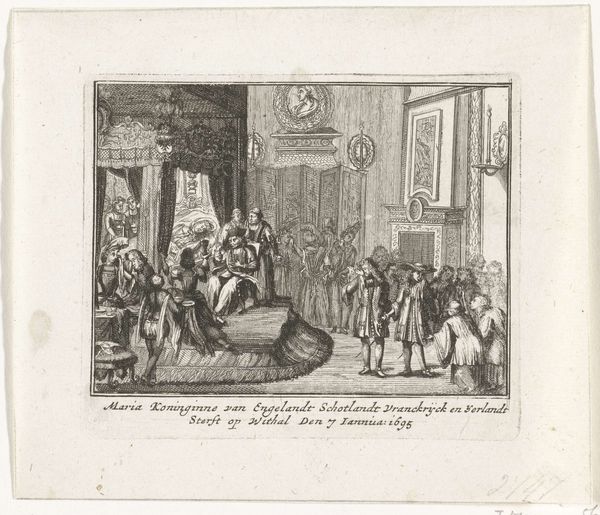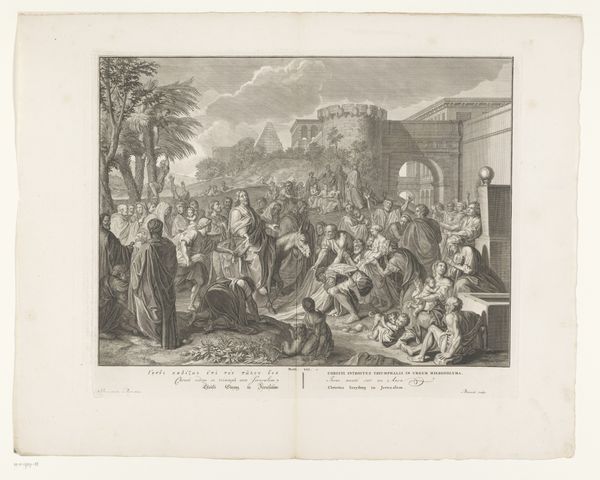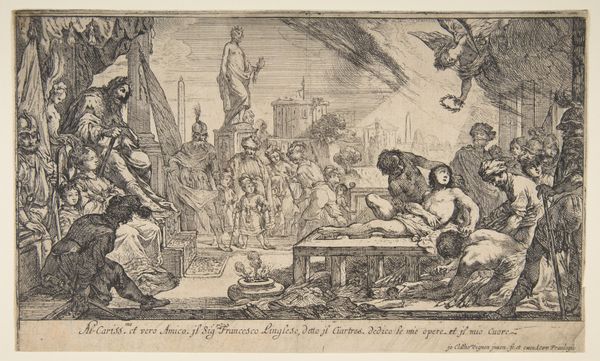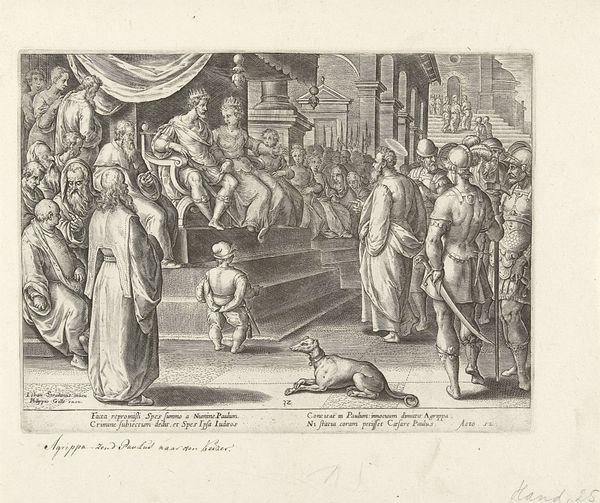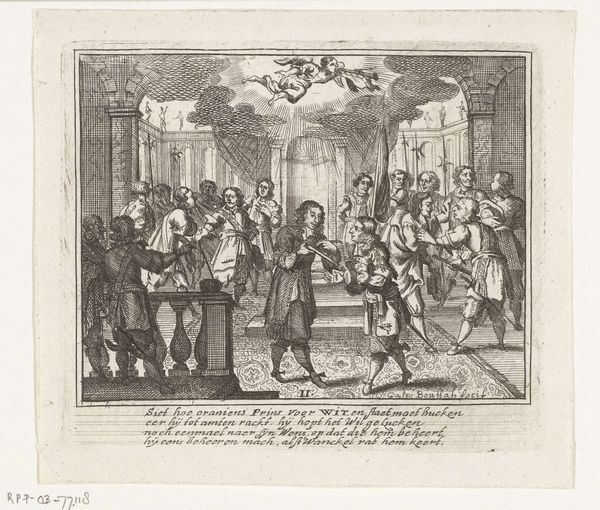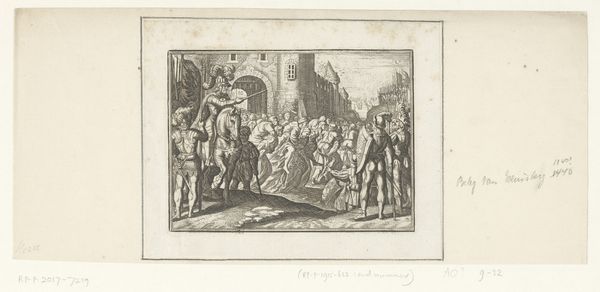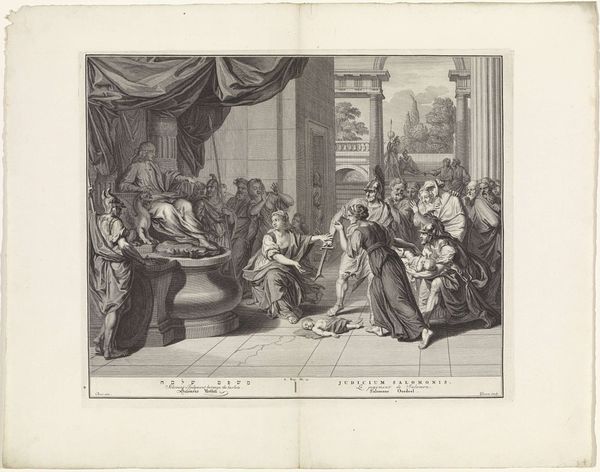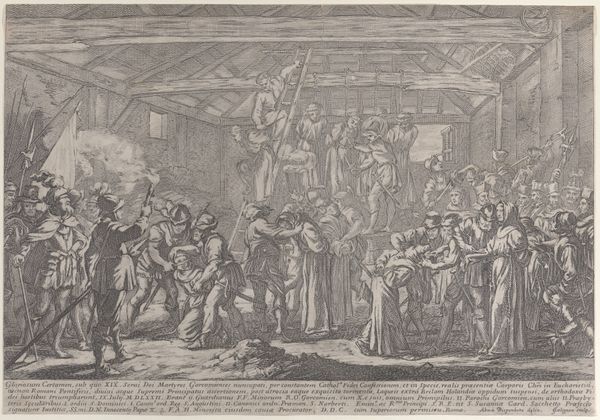
Koning Willem III en koningin Maria ontvangen de kroon van Schotland en leggen de eed af, 1689 1689
0:00
0:00
#
aged paper
#
toned paper
#
pencil sketch
#
old engraving style
#
personal sketchbook
#
pen-ink sketch
#
pen work
#
watercolour illustration
#
pencil art
#
watercolor
Dimensions: height 154 mm, width 195 mm
Copyright: Rijks Museum: Open Domain
Pieter Pickaert made this engraving around 1689, depicting William III and Queen Mary receiving the crown of Scotland. This image wasn’t created with traditional fine art materials like oil paint or marble, but instead through the relatively new industrial process of etching. Here, a metal plate – likely copper – has been coated in wax, and then scratched into with a sharp tool to reveal the image. The plate is then submerged in acid, which bites into the exposed lines. The deeper the bite, the more ink it will hold. The ink is applied, the surface wiped clean, and the image transferred to paper under great pressure. The resulting print bears the marks of this process. The delicate web of lines describes a scene of great political significance; it is a picture made possible by emergent modes of mass production. This alliance between statecraft, labor, and consumption is what makes Pickaert's print so compelling today, challenging traditional distinctions between statecraft, fine art, and craft.
Comments
No comments
Be the first to comment and join the conversation on the ultimate creative platform.
